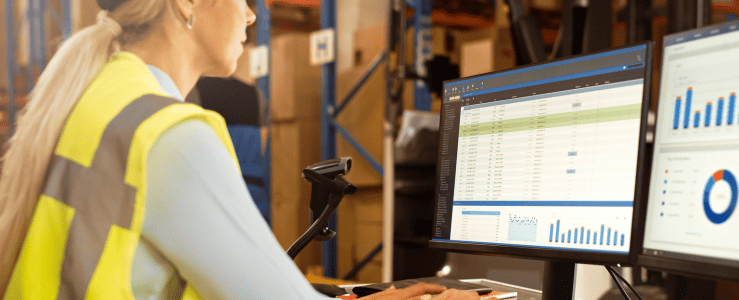Blog

Trends for SAP Manufacturers in the Building Material Industry
It sounds like a broken record to cite ongoing COVID-19 supply chain impacts but nowhere is it more apparent than in the building materials industry today. China and Italy are major producers and also hard-hit by the pandemic, demand has been outstripping production capabilities for a significant period of time. The pandemic also drove increased demand for products like plexiglass, and plastics, as social distancing barriers became the norm.
Tariff changes to date have been incorporated into manufacturers costs, but 2023 may bring new or increased tariffs that negatively impact demand. If no new tariffs impact the industry dramatically, manufacturers must take care to balance increased costs, new/existing tariffs, price increases, and demand levels to ensure each order is properly priced for optimal margins.
Green building materials and practices continue to gain popularity–especially in non-residential buildings that now comprise 40-48% of green buildings in the U.S. alone. Innovations from wool bricks to low-emission concrete and mass timber to post-consumer PET material all contribute to a booming green building materials industry.
Other trends to keep an eye on include:
- U.S. housing pricing flattening out
- Infrastructure spend increasing as part of the Infrastructure Investment and Jobs Act
- Outdoor construction and renovation continue to be popular in residential and commercial spaces
- Curbing emissions remains a hot topic–lead by EU emission reduction targets for 2030
Pricing & Quoting: Building Material Manufacturers Must be Agile
So many trends–some competing and all moving quickly–are racing to manufacturers doorsteps. Now, more than ever, it’s critical that every order placed have the most accurate pricing and ATP–reflecting increasing cost of materials, changing tax rates, varying shipping costs and timelines, and more.
This means any manual or semi-automatic pricing and quoting solutions put margins and profits at risk. Having to call someone with SAP access to confirm pricing, or to find out part availability, is not scalable. Shipping costs and timeline change by the minute and misquoting it means angering a customer or eating the difference.
B2B Commerce: As Frictionless as B2C Shopping
Consumer eCommerce solutions often recommend alternative products, colors, or options when a desired product is unavailable. B2B commerce–even direct with manufacturers–needs to offer similar functionality in your eCommerce portals. These alternatives, and associated business logic, are often already configured in SAP and only need to be manifested in the commerce portal.
In eCommerce experiences, consumers are used to self-service choices that are fast and easy. Even though manufacturing B2B eCommerce is more complicated, it should still operate with the same frictionless goals. Ensuring that the eCommerce solution is directly connected to SAP is one critical step as it supports complex business logic for highly configurable products. It also enables bulk pricing, available inventory, and shipping options. In a time of extreme supply chain volatility, ensuring all these prices and discounts are 100% accurate is more important than ever.
To learn about the time and dollar efficiencies that come from connecting SAP directly to your B2B commerce portal, CRM, or other front-end system, let’s talk! You can also check out our resources for optimizing your business process.


